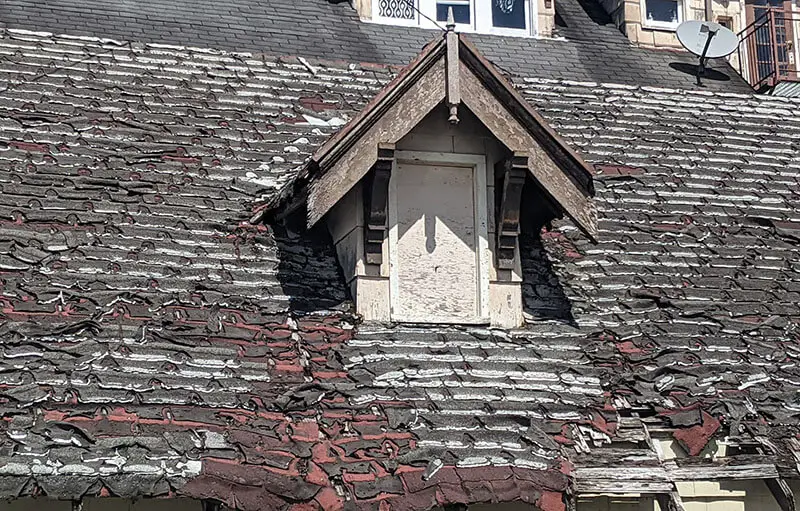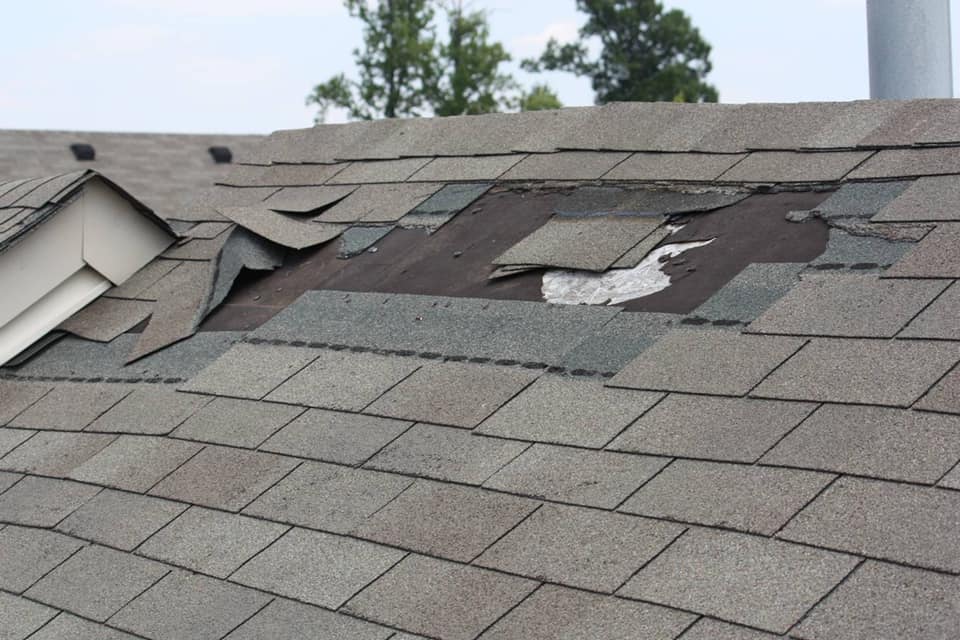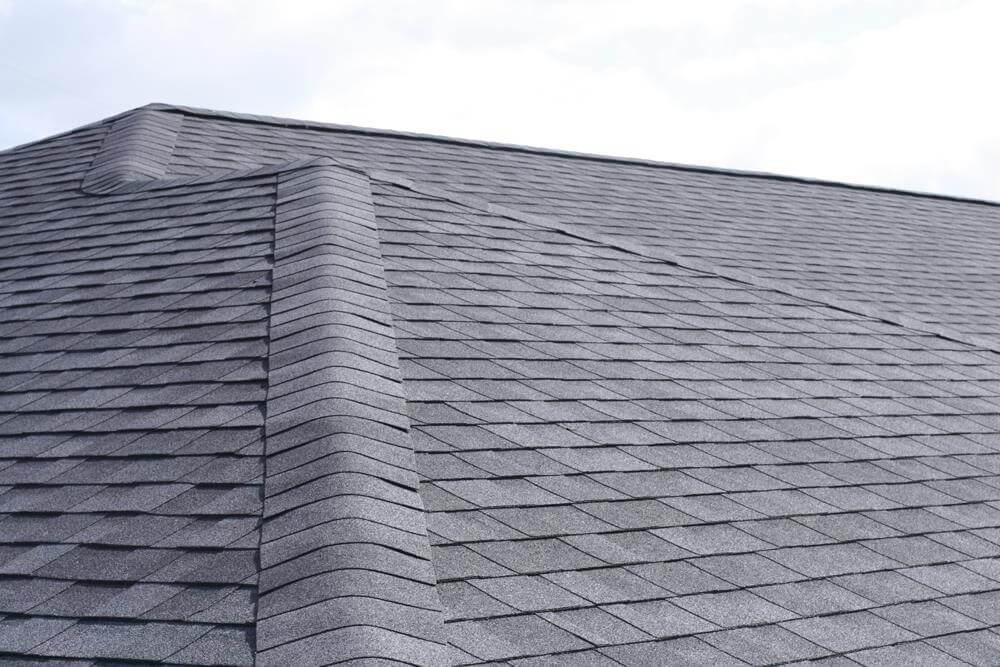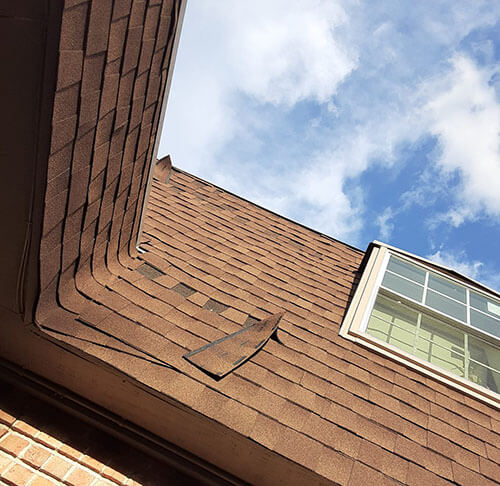No, shingles don’t melt together but can soften up and expand during extreme heat. Besides, the shingles’ lifespan might get reduced, and you might notice color degradation of them.
And, yes, if you meant that they become pliable due to the heat, the answer is yes. But they do not melt completely together like a liquid or fuse into a single mass. There are also some misconceptions that I cleared out here.
And, when I mean melting of shingles, there are some specific situations, but it doesn’t mean they will melt down and damage your roof. To help you understand it, I made a table of all types of shingle materials, their melting point, softening point, and whether they can melt.

| Material | Melting Point | Softening Point | Possible Melting at Highest Temperature? |
| Asphalt Shingles | 220-260°C (428-500°F) | 70-90°C | No |
| Fiberglass Shingles | 250-260°C (482-500°F) | 260-330°C | No |
| Wood Shingles | It does not melt, but Ignites around 190°C (374°F) | 65-90°C | Yes (Can burn or char) |
| Metal Shingles | Varies depending on the metal type | Varies | No (But it may deform or warp) |
| Slate Shingles | It does not melt but can crack under extreme heat | Does not soften | No |
| Synthetic Shingles | Varies by material; typically above 200°C (392°F) | Varies | No |
| Clay or Concrete Tiles | 1200-1600°C | 150-200°C | No |
Quick Jump
Effects of Heat on Shingles
When it comes to your roof, heat can pack a punch, affecting the shingles in many ways. Readers who live in sunny areas like California, Arizona, and Nevada or places where most of the time is summer or heat, you guys will highly relate to what I’m about to say.
I’m here to shed some light on the effects of heat on shingles, and here’s what you need to know;
- Under intense heat or direct sunlight, shingles can soften, and as a result, softening can cause them to become more pliable and mold to the shape of your roof, improving their ability to seal out water.
- Like anything else, shingles expand when exposed to heat, and expansion can cause them to buckle, curl, or warp slightly.
- The lifespan of your shingles can be affected by extreme heat. Intense and prolonged exposure to high temperatures can accelerate the aging process of the shingles, causing them to deteriorate more quickly over time.
- Those vibrant shingle colors you fell in love with initially may start to fade over time due to UV radiation and heat exposure. The intense heat can cause the pigments in the shingles to break down, resulting in a duller appearance.
It doesn’t end there. Many of us prefer dark colors everywhere, and sometimes we choose dark colors for our shingles too. Shingles’ heat absorption properties can impact a building’s energy efficiency.
Heat-absorbing shingles, such as dark-colored ones, can increase the temperature inside your home. It means your cooling system has to work harder, resulting in higher energy bills. Opting for lighter-colored or reflective shingles can help mitigate this heat absorption and keep your home cooler.
Is There Any Misconception About Shingles Melting Together?

There seems to be a belief among some homeowners that shingles will completely melt and fuse into a solid mass during hot weather. I’m here to shed some light on this matter and set the record straight.
First, it’s important to understand that traditional roofing shingles, made of asphalt, wood, or metal, do not melt together like a block of ice under the scorching sun. Shingles are designed as individual roofing materials and maintain their distinct shape and integrity even in high temperatures.
However, there’s a grain of truth in this misconception. When the weather gets really hot, shingles can become more pliable or soft due to the heat. But that’s good in a way.
As a result, the softening allows them to conform better to the shape of the roof and improves their ability to create a tight seal against water infiltration.
In extreme cases, especially with asphalt shingles, the softening may cause the shingle tabs to stick together slightly. You might have noticed or seen that it can result in a visual appearance where it seems like they have melted together, but it’s important to note that they retain their individual properties and don’t fuse into a single mass.
But I can assure you, that’s not the case. Even if you feel there are larger issues, having a professional roofer inspect it is a good idea.
Specific Instances Where Shingles May Appear to Melt Together

Yes, there are some specific situations where it might seem like there are issues with the shingles, which might seem like they are melting together.
These things can happen for various reasons, and It’s important to remember that these situations are not the norm for traditional roofing shingles, but exceptions do exist.
So, let’s dive in and explore some of these scenarios:
Situation #1: High Temperatures
Shingles can become soft and pliable during exceptionally hot weather, especially in regions with scorching summers. While they don’t fully melt like a liquid, the excessive heat can cause them to fuse slightly, creating an appearance of melted shingles.
The situation can appear if the shingles are in direct sunlight for extended periods without proper ventilation or insulation.
Situation #2: Low-Quality Materials
In some cases, using low-quality shingles or improper installation techniques can result in shingles being more prone to melting or fusing. Inferior materials may have lower melting points, making them susceptible to distortion under high temperatures.
Additionally, if the shingles are not installed correctly, they may not have enough space for thermal expansion, leading to melted shingles.
Situation #3: Improper Roof Ventilation
Inadequate roof ventilation can trap heat in the attic, leading to elevated temperatures on the roof surface.
As a result, excessive heat can affect the shingles, causing them to soften and stick together. It’s essential to ensure proper attic ventilation to prevent such issues and maintain the integrity of your shingles.
Situation #4: Roof Coatings or Membranes
Certain roofing coatings or membranes are designed to bond together under high temperatures. These specialty materials are used in specific roofing systems or applications, such as flat roofs or reflective coatings.
These coatings or membranes can melt and fuse when heat exposure, creating a seamless protective layer. However, it’s important to note that this behavior is specific to these specialized products and not typical of standard shingles.
Proper Roofing Installation and Maintenance Regarding Shingles

I want to share some insights on proper roofing installation and maintenance to help you avoid the issues we discussed earlier.
By following these tips, you can ensure your shingles stay in great shape and your roof remains sturdy for years. Let’s dive in!
- When it comes to shingles, always opt for high-quality materials. They might be a bit pricier, but trust me, it’s worth the investment. Look for durable, weather-resistant shingles that have a proven track record of performance.
- Unless you have extensive roofing experience, leaving the installation to the pros is best. Hiring a reputable roofing contractor ensures that the shingles are installed correctly, minimizing the chances of issues down the road.
- Proper ventilation is crucial for maintaining the health of your roof. It helps prevent excessive heat buildup, which can affect the shingles’ integrity. Ensure your attic has sufficient ventilation, allowing for proper air circulation and reducing the risk of shingles softening or melting in hot weather.
- A well-insulated roof helps with energy efficiency and protects your shingles. Insulation helps regulate the temperature in your attic, preventing extreme heat or cold from affecting the shingles.
- Make it a habit to inspect your roof at least once or twice a year. Look for any signs of damage, such as cracked or missing shingles, loose flashing, or deteriorated seals.
- While shingles are designed to withstand the elements, keeping them clean is a good idea. Remove debris, leaves, and branches from your roof regularly, as they can trap moisture and accelerate deterioration.
Of course, there are more minor issues that you need to look out for. But, for now, these will do the job. Keep those in mind, and you’re good to go.
Wrap Up
As you already might know, the shingles don’t melt like liquid, but during excessive heat or other issues, they might seem like they are melting.
As I discussed all the regular or irregular issues that might be causing that issue, you should be able to figure it out. If you need help, professionals can always help, or you can let me know.
Good luck!

Roger Lewis is an experienced roof repair contractor with over 15 years of industry experience. He is known for his expertise in all aspects of roof repair, including leak detection, shingle replacement, and gutter repair.
